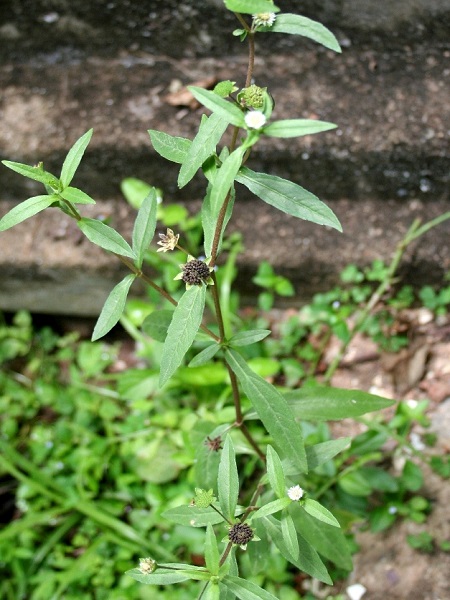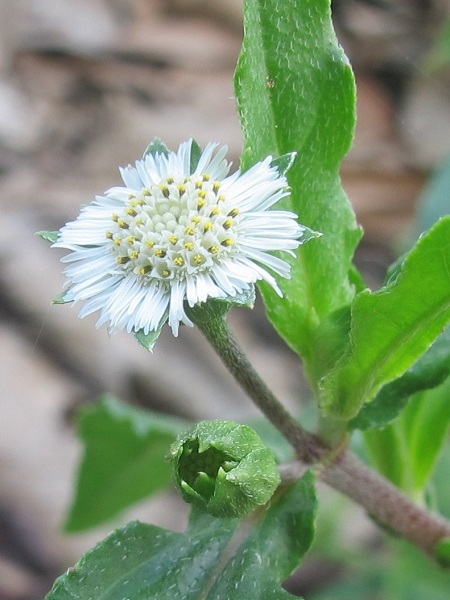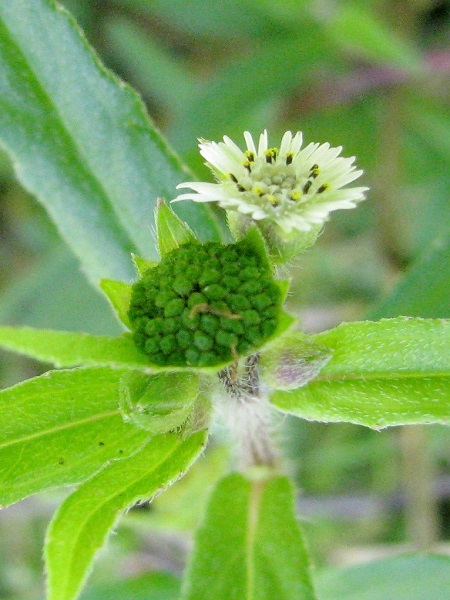
| Family | Asteraceae |
| English Name | False daisy, yerba de tago and bhringra |
| Malayalam Name | Ankaravariti, appulantam |
| Tamil Name | Kayyoonni, kanjunni |
| Kannada Name | Bhringaraja, garagalu |
| Telugu Name | Galagarachettu |
| Hindi Name | Bharangraj, mocakand |
| Sanskrit Name | Bhringaraj |
| Trade Name | Bhringaraj |
| Part Used | whole plant and seeds |
| In Wild | Yes |
| Under Cultivation | Yes |
| Temperature | 25 C to 35 0 C |
| Rainfall | NA |
| Farmers | NA |
| Traders | NA |
| Institution | NA |
| Individually | NA |
| State/Region | NA |
| District | NA |
| Nursery Information | NA |
| Yield | NA |
| Economic of cultivation | Rs. 15750/- is the estimated cost of cultivation for one hectare. Market price as on May 2018 is Rs. 350- 500/kg |
| Quantitative quality standards | Foreign matter: not more than 2% Ash: not more than 7% Acid insoluble ash: not more than 1.2% Ethanol soluble extraction: not less than 16% Water soluble extraction: not less than 11.0% |
| Description | NA |
| Agro technology/Cultivation practices | Planting-stock production: Propagules could be raised from seeds and stem cuttings. Seed propagation: Seed germination is 75-85%. Collected mature seeds 450-500 gm giving about 25,000 propagules plus 10% for gap filling are required. No pre-treatment of seed is necessary. The field should be well prepared and made weed-free before transplanting. FYM @ 15 t/ha should be applied as basal dose during land preparation. Vegetative propagation: stem cuttings Field planting: Best time of transplanting of propagules is April-May, it can be planted in August, where nursery is established in rainy seasons. The optimum spacing is 20X20 cm. Manuring/Fertilization: Eclipta alba is 3 months crop. 1st intercultural operation with 20 kg nitrogen after 20-30 days of transplanting, while 2 intercultural operation with 10 kg nitrogen @ 50 days after transplanting may be adopted for optimum crop growth and yield of biomass. Irrigation: Need- based irrigation could be done. Pest and diseases: No disease is observed, certain insect cause minor damage during early stage of crop growth. Specialist may be consulted in case of part damage. |
| Harversting | The crop can be harvested 90 days after transplanting at early flowering stage. After harvesting, above- ground parts of plant should be cleaned; shade- dried, packed in gunny bags and kept in cool and dry place. |
| Processing | NA |
| References | NA |


